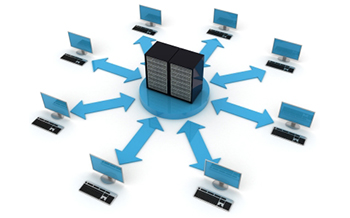Is That Email a Phishing Scheme?

Research has revealed that over half of all users end up opening fraudulent emails and often even fall for them. Phishing is done with the aim of gathering personal information about you, generally related to your finances. The most common reason for the large number of people falling for fraudulent emails is that the phishing attempts are often so well-disguised that they escape the eyes of a busy email reader. Here are a few tips that help you identify whether that email really came from your bank or is another attempt at defrauding you…
1. They are asking for personal information – Remember, no bank or financial institution asks you to share your key personal information via email, or even phone. So, if you get an email where they ask for your ATM PIN or your e-banking password, something’s amiss.
2. The links seem to be fake – Phishing emails always contain links that you are asked to click on. You should verify if the links are genuine. Here are a few things to look for when doing that:
-
- Spelling – Check for the misspellings in the URL. For example, if your bank’s web address is www.bankofamerica.com, a phishing scheme email could misspell it as www.bankofamarica.com or www.bankofamerica-verification.com
-
- Disguised URLs – Sometimes, URLs can be disguised…meaning, while they look genuine, they ultimately redirect you to some fraudulent site. You can recognize the actual URL upon a mouseover, or by right clicking on the URL, and selecting the ‘copy hyperlink’ option and pasting the hyperlink on a notepad file. But, NEVER ever, paste the hyperlink directly into your web browser.
- URLs with ‘@’ signs – If you find a URL that has an ‘@’ sign, steer clear of it even if it seems genuine. Browsers ignore URL information that precedes @ sign. That means, the URL www.bankofamerica.com@mysite.net will take you to mysite.net and not to any Bank of America page.
3. Other tell-tale signs – Apart from identifying fake URLs, there are other tell-tale signs that help you identify fraudulent emails. Some of these include:
-
- Emails where the main message is in the form of an image, which, upon opening, takes you to the malicious URL.
-
- Another sign is an attachment. Never open attachments from unknown sources as they may contain viruses that can harm your computer and network.
- The message seems to urge you to do something immediately. Scammers often induce a sense of urgency in their emails and threaten you with consequences if you don’t respond. For example, threat of bank account closure if you don’t verify your ATM PIN or e-banking password.
Finally, get a good anti virus/email protection program installed. It can help you by automatically directing spam and junk mail into spam folders and deactivating malicious attachments.
Is your Business Safe from Virtual Threats?

Did you know that 50% of small business owners think their businesses are too small to be targeted by the thieves of the virtual world? Contrary to popular belief, 72% of hacker attacks often happen to smaller firms – firms with less than 100 employees! So how prepared is your SMB? Here’s a checklist to help you find out how vulnerable you are to these attacks.
1. Do you have Antivirus protection? – An antivirus software program can protect you from threats that originate from emails such as phishing and virus attacks. However, the most striking fact is that 61% of small businesses don’t install any antivirus software! If you are one of them, then it’s time to change!
2. How sturdy is your Firewall? – A good firewall system protects your computers from the variety of threats that exist in the virtual world. Examples include harmful cookies, viruses, worms and other such malicious programs used by hackers.
3. Do you use a Spam filter? – Using a simple spam filter for your emails keeps junk out of your inbox. The bonus to having a good spam filter is that your employees save time, as they are not distracted by irrelevant emails, but the major perk here is that the potential virus and phishing threats are lessened as spam emails are unlikely to be opened.
4. Do you do backup your data regularly? – Agreed – backups don’t really protect your data, but they are the only way to recover it if data loss does happen. So, be sure you have a regular and reliable backup plan in place – and it is actually being deployed.
Data loss can prove very costly—especially to SMBs, sometimes even resulting in them having to close down. Prevention is certainly better than a cure in such cases.
How SMBs Can Utilize the Cloud To Build Their Business

How SMBs Can Utilize the Cloud To Build Their Business
There has been a lot of talk lately about the cloud and its ability to put small to midsize businesses (SMBs) and startups on a level playing field with large global enterprises. Can this be substantiated or is it a load of trendy hype to push SMBs to cloud-based solutions? We’ve compiled this breakdown of how the cloud can be used to boost profitability.
The Convenience Factor
It once took smaller companies and startups weeks to launch and configure their own IT infrastructure. Doing so also required a ton of overhead costs. Today’s cloud technology provides the benefits of this very same infrastructure but on an as needed and on-demand basis. SMBs can build a technology infrastructure for themselves online in less than a minute.
For example, a smaller agency that provides apps for its clients, can turn to a Platform-as-a-Service (PaaS) cloud provider. A PaaS provides companies an environment that enables them to more easily host and deploy apps. They do this by shielding developers from the hassles that come with the set up, configuration, and management of things like servers and databases.
Without having to worry about things on the infrastructure side, the company and its application developers can focus on creating innovative apps that will generate business revenue. Once their server is online and available, they can launch instantly with a 1-click deployment of their application.
Mission Critical Agility & Scalability
In the tech industry, everyone must channel his or her inner Maverick and Goose* because there is a need… a need for speed. Speed is everything and agility is mission critical. The cloud’s rapid provisioning of computer resources can offer additional storage space in mere minutes rather than weeks.
Having that kind of agility bodes particularly well for the scalability needs of SMBs. As business grows and the need to store more data increases, the cloud is flexible enough to resize your infrastructure on the fly and grow with you.
The cost of cloud-based solutions is much more beneficial to SMBs than the cost of traditional shared or dedicated hosting plans. This eliminates the high overhead that comes with buying dedicated hardware and hiring staff to run the servers.
Cloud technology has empowered SMBs by eliminating any need to make the same kind of costly upfront investments that large enterprise are able to incur. There is no longer a need for SMBs to spend thousands of dollars building out a massive infrastructure to support their big data applications. Better yet, backing up that big data is also inexpensive compared to traditional hosting solutions.
* Top Gun, 1986, in case you were wondering
Contact us at SpeedWise IT Services
A Smarter Approach to Mobile Device Management

A Smarter Approach to Mobile Device Management
More people today use personal mobile devices like smartphones and tablets for business purposes. Such devices, coupled with greater Wi-Fi accessibility and cloud services, have empowered us with the ability to access data and do business from practically anywhere at anytime.
Needless to say, many small-to-medium sized business owners have embraced the BYOD (Bring-Your-Own-Device) revolution. The benefits are obvious; increased employee productivity, enhanced services to customers/clients, and better overall customer and employee satisfaction.
But what about the potential consequences associated with this mobility revolution? Are small business owners doing enough preemptive planning to address potential risks that could arise with the use of BYOD devices?
Mobile Device Management – Questions Every SMB Should Ask
First, it is important that small business owners honestly assess whether their systems, networks, data, and overall infrastructure are ready for the use of an array of mobile devices.
Once it is firmly established that both internal IT and components in the cloud are prepared for BYOD, solutions should then be put into practice that are concurrent with terms of use policies or any guidelines pertaining to remote/telecommute workers or the sharing of sensitive data. The following questions should be answered.
- What particular devices or applications are permissible for work use? Assuming security requirements are in place, not every device or application will meet those.
- Will anyone in the company be tasked with the daily management of BYOB strategies? What should BYOD policies cover and what kind of management solutions will be needed? Would a BYOD management tool that collects device information, deploys and monitors usage, and offers insight into compliance be helpful?
- Which costs will be the responsibility of the employee? This pertains to any fees associated with usage – from network plans, to the device itself, to software, accessories and maintenance costs.
- What data will be accessible? Will data encryption be necessary for certain information traveling through the personal devices of employees? Which employees will have read, write, update/delete privileges?
- What is the process when handling sensitive data stored on lost or stolen devices, or the personal devices of ex-employees? Does the company or organization have the right to wipe out the entire device or just corporate data and apps?
BYOD is here to stay as it affords smaller-sized companies the mobility of a corporate giant without a huge investment. But when it comes to ensuring that devices, applications and networks are safe from the variety of threats linked to greater mobility, small business owners may find it necessary to enlist the help of a managed service provider to adequately take on mobile management challenges and provide ongoing consultation.
Contact us at SpeedWise IT Services

